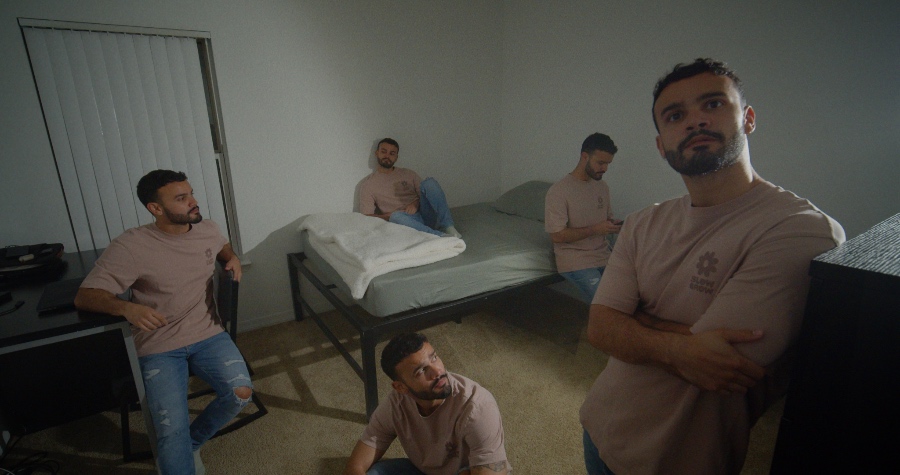Obsessive compulsive disorder is a mental illness that affects over 2 million Americans. It is characterized by the presence of obsessions and compulsions. In this article, we will discuss the signs and symptoms of obsessive compulsive disorder, as well as its causes and treatments.
1: What Is Obsessive Compulsive Disorder?
Obsessive Compulsive Disorder (OCD) is an anxiety disorder that causes people to have unwanted intrusive thoughts, images, and urges. People with OCD often feel compelled to perform rituals, or compulsions, to help ease their anxiety. For example, they may repeatedly wash their hands to get rid of germs or have to check the door multiple times to make sure it’s locked.
OCD can be a debilitating condition that affects your personal, social, and work life. It usually starts in early adulthood but can also affect children and teens. Symptoms of OCD include persistent intrusive thoughts, anxiety, and repetitive behaviors such as cleaning, ordering, and checking. People with OCD may also have difficulty concentrating and can be overly perfectionist. There are several treatments for OCD including Cognitive Behavioral Therapy (CBT), Exposure and Response Prevention (ERP), medications, and family therapy.
With the right treatment and support, people with OCD can learn to manage their symptoms and lead a fulfilling life. If you or someone you know is suffering from OCD, it’s important to reach out for help.
2: What Are the Signs and Symptoms of Obsessive Compulsive Disorder?
Obsessive Compulsive Disorder (OCD) is an anxiety disorder characterized by recurrent and distressing thoughts, impulses, or images (obsessions) and repetitive behaviors or mental acts (compulsions). OCD can significantly interfere with daily functioning, making it difficult for those affected to go about their lives.
Symptoms of OCD can vary for each individual, but there are some common signs and symptoms that are typically observed in those with the disorder. These include having persistent intrusive thoughts, experiencing a high level of distress when attempting to control the thoughts, feeling compelled to perform rituals or behaviors to reduce the anxiety caused by the thoughts, and an inability to ignore or stop the thoughts or behaviors.
Other symptoms may include spending an excessive amount of time on certain activities, avoiding certain situations due to fear, difficulty concentrating, and feeling overwhelmed by everyday tasks. If you or someone you know is experiencing any of these signs and symptoms of OCD, it is important to seek help from a mental health professional as soon as possible.

3: How Is OCD Diagnosed?
Obsessive-Compulsive Disorder (OCD) is a serious mental health condition that affects millions of people around the world. Diagnosing OCD can be a difficult process, as it requires medical professionals to assess the severity of symptoms and determine if their presence is causing significant distress or impairment in one’s daily life. It is essential to understand the criteria that are used to diagnose OCD in order to receive an accurate diagnosis and begin treatment.
The primary criteria used to diagnose OCD is the presence of obsessions and compulsions. Obsessions are recurrent and persistent thoughts, urges, or images that cause significant anxiety and distress. Compulsions are behaviors, such as counting, cleaning, checking, or repeating certain thoughts or actions that one feels compelled to perform in response to an obsession. To be diagnosed with OCD, both obsessions and compulsions must be present and significantly interfere with one’s daily functioning.
The Diagnostic and Statistical Manual of Mental Disorders (DSM-5) provides clinicians with specific criteria for diagnosing OCD. To meet the diagnostic criteria for OCD, an individual must experience obsessions and compulsions that are time-consuming (taking up at least one hour per day) or cause significant distress or impairment in their daily life. In addition, the DSM-5 includes specifiers for OCD subtypes, such as hoarding or intrusive thoughts, which can help guide treatment.
In addition to the DSM-5 criteria, medical professionals may also use structured interviews and questionnaires to assess for OCD symptoms. These tools provide clinicians with information about the severity of symptoms, which can help guide treatment decisions. Furthermore, medical professionals may use neuroimaging techniques such as functional magnetic resonance imaging (fMRI) to examine how the brain functions in people with OCD.
It is important to note that diagnosing OCD can be a lengthy process as it involves a thorough assessment of symptoms and impairment. If you believe you may have OCD, it is important to speak with a mental health professional who can accurately diagnose and provide appropriate treatment recommendations.
4: What Are the Causes of Obsessive Compulsive Disorder?
Obsessive Compulsive Disorder (OCD) is a mental health condition that causes an individual to experience repeated, intrusive thoughts and compulsions or behaviors. It is important to understand the causes of OCD in order to better equip individuals to manage and reduce symptoms. While the exact cause of OCD is not known, there are several factors that may contribute to OCD development.
Some of the most common causes include genetic predisposition, environmental factors, and neurological imbalance. Research has shown that individuals with a family history of OCD are more likely to develop the disorder. In addition, environmental stressors such as traumatic life events or stressful situations can trigger OCD symptoms.
Lastly, imbalances in certain neurotransmitters in the brain have been linked to OCD, suggesting that biochemical imbalances can play a role in the development of the disorder. Although the cause of OCD is not yet fully understood, it is important for individuals to recognize the potential causes so that they can seek proper treatment and management.

5: What Are the Treatments for Obsessive Compulsive Disorder?
Obsessive Compulsive Disorder (OCD) is a mental disorder that is characterized by intrusive thoughts, unwanted urges and fears, as well as repetitive behaviors. If left untreated, OCD can have a major impact on a person’s everyday life. Fortunately, there are several treatments available that can help manage the symptoms of OCD.
Cognitive Behavioral Therapy (CBT) is a type of psychotherapy that can be used to treat OCD. CBT helps individuals learn to identify and modify their thoughts and behaviors to reduce the symptoms of OCD. Exposure and Response Prevention (ERP) is another type of therapy used to treat OCD. ERP works by exposing individuals to their obsessions and then teaching them how to resist compulsions. Medications are also an option for treating OCD.
Selective serotonin reuptake inhibitors (SSRIs) are the most commonly prescribed medications for treating OCD. They work by increasing the levels of serotonin in the brain which can help reduce symptoms of OCD. It is important to note that medications should always be taken under the guidance of a doctor. With the right combination of treatment methods, individuals living with OCD can lead full, productive lives.
6: How Can I Help Myself or Someone Else With Obsessive Compulsive Disorder?
Obsessive-Compulsive Disorder (OCD) is a mental condition that causes sufferers to experience unwanted and intrusive thoughts, feelings, and behaviors. It can be difficult to know how to help yourself or someone else who is living with OCD. The first step is to become educated about the condition and the available treatments. Research online and talk with doctors, mental health professionals, and other people who have experienced OCD to gain more knowledge.
It is also important to provide emotional support for someone with OCD, as it can be a very isolating and stressful condition. Listen attentively to their feelings and experiences, and offer validation and encouragement. Additionally, make sure that they have the resources they need to access professional help if needed. Cognitive Behavioral Therapy (CBT) is one of the most common treatments for OCD, as it helps individuals identify and challenge their irrational thoughts, which can reduce anxiety and obsessive behaviors.
It is also important to create a safe environment for those with OCD by avoiding triggers. Finally, make sure that people who are struggling with OCD know that you are there for them, as emotional support can be just as important as professional treatment. With the right approach, it can be possible to help yourself or someone else manage OCD symptoms.
7: Related Information About OCD and Treatment
Obsessive-compulsive disorder (OCD) is a mental health disorder that affects an estimated 2.3% of adults in the United States. It is characterized by recurrent, intrusive, and unwelcome thoughts—called obsessions—and ritualized behaviors—called compulsions—that are performed in an effort to reduce the distress brought on by the obsessions.
Common compulsions include repetitive handwashing, counting, or checking behaviors. Treatment for OCD often involves cognitive behavioral therapy (CBT) and/or exposure and response prevention (ERP) therapy. CBT helps people with OCD identify and challenge negative thought patterns, while ERP helps them confront their fears and resist the urge to perform compulsions.
In addition to traditional forms of therapy, individuals with OCD may also benefit from alternative treatments, such as mindfulness meditation or yoga. Understanding the nature of OCD and available treatment options can help individuals who suffer from this disorder receive the care they need to manage their symptoms.
Conclusion
Obsessive compulsive disorder is a serious mental illness that requires immediate treatment. If you or someone you know is suffering from this condition, please contact one of our counselors for help.




















